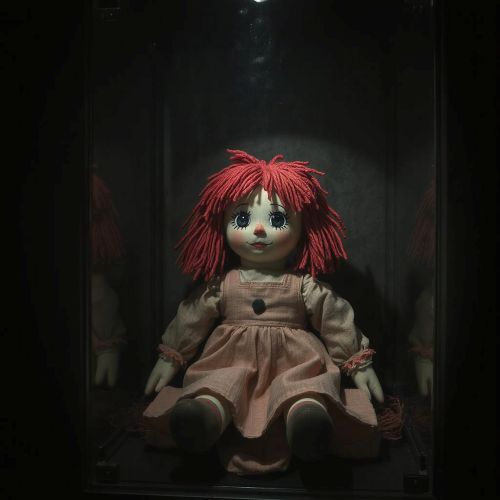Bibit : The Elusive Spirit
Listen
At a glance
| Description | |
|---|---|
| Origin | Philippine Mythology |
| Classification | Spirits |
| Family Members | N/A |
| Region | Philippines |
| Associated With | Water, Bad luck, Illness |
Bibit
Introduction
The Bibit is a captivating figure from Filipino folklore, known for its child-like appearance and unpredictable behavior. This mysterious creature, often linked to rivers and nature, plays a unique role in Philippine mythology. Its presence offers a glimpse into the beliefs and values of early Filipino communities, particularly through its connection to water as a life-giving force. As a water spirit, the Bibit embodies the deep respect and reverence indigenous Filipinos had for the natural world, making it a central character in the country’s rich mythological heritage.
Physical Traits
The Bibit’s appearance varies widely across the Philippines, reflecting the diverse regional interpretations of this enchanting creature. Typically, it is portrayed as a small, humanoid figure resembling a child, often dressed in flowing garments that mimic aquatic plants or glisten like water. Its delicate features and luminescent skin, which shimmers in shades of blue and green, highlight its strong connection to water.
In some tales, the Bibit is depicted with fins or gills, reinforcing its identity as an aquatic spirit. This portrayal resonates with local mythologies that celebrate the magical bond between creatures and their environments. The imagery associated with Bibit evokes a sense of wonder and respect for nature, showcasing the deep relationship between humans and the natural world in Filipino culture.
While often appearing child-like and diminutive, the Bibit possesses an impressive array of powers. Some accounts describe it with large, expressive eyes, capable of perceiving realms beyond human sight. Others note its mischievous grin, suggesting a playful, unpredictable side. Depending on the region, the Bibit can be seen as an adorable, cherubic being or an eerier figure, reflecting the varied interpretations of this beloved character.
Family
Bibit’s family is intricately linked to the broader spectrum of water spirits and deities in Philippine mythology. Many stories connect Bibit with other aquatic beings, like the diwata (fairy) and elemental spirits. These relationships highlight the harmonious interplay among spirits and the natural world, emphasizing each entity’s role in maintaining ecological balance.
In some narratives, Bibit is depicted as the offspring of prominent water deities or protective spirits, which enhances its stature and influence within the mythological landscape. Such familial ties reflect the significance of lineage and heritage in Filipino culture, where family connections shape individual identities. However, unlike other mythical creatures with well-defined family trees, Bibit’s connections are often shrouded in mystery. Some tales suggest that Bibit is a solitary being, meandering through dense forests and secluded waters, while others propose the existence of a hidden community of similar creatures. This ambiguity surrounding its family ties adds to the enchantment of Bibit, inviting speculation about its origins and kinship among storytellers and listeners alike.
Other names
Bibit is known by different names throughout the Philippines, showcasing the rich linguistic and cultural diversity of the archipelago. In some regions, it is called “Bitoon,” meaning “star” in certain dialects, linking Bibit to celestial as well as aquatic themes. These variations not only enhance the character’s significance in Filipino mythology but also reflect local traditions that shape its narrative.
The array of names underscores how mythological figures can adapt to different cultural contexts while maintaining their core identity. For instance, in some areas, Bibit is referred to as “Bibi,” highlighting its small and child-like stature, while other regions call it “Bebet” or “Bibingka.” Each name enriches the creature’s identity and reflects the vibrant oral tradition of the Philippines, where stories and characters evolve with each retelling, preserving ancient lore while incorporating contemporary values.
Powers and Abilities
Bibit is endowed with a range of powers that reflect its role as a guardian of water and nature. One of its most notable abilities is the manipulation of water, allowing it to control currents and tides while maintaining balance in aquatic ecosystems. This power underscores Bibit’s significance to communities that depend on fishing and agriculture, highlighting the essential role of water in sustaining life.
In addition to controlling water, Bibit is often associated with healing abilities, particularly concerning ailments linked to nature. It is frequently called upon in rituals to seek blessings for safe travels across water or to ensure a bountiful harvest, reinforcing its role as a protector. This healing aspect aligns with the Filipino belief in the interconnectedness of health, environment, and spirituality.
Bibit also possesses the remarkable ability to blend into its surroundings, making it nearly invisible to those unaware of its presence. This chameleon-like skill allows it to observe and engage with the world without attracting attention. Furthermore, Bibit is believed to influence human emotions, often invoking feelings of joy or discomfort. This emotional resonance is tied to its child-like nature, which can elicit a sense of innocence and wonder, or alternatively, an unsettling feeling of unease.
Modern Day Influence
Bibit’s influence is prominent in various aspects of modern Philippine culture. Contemporary literature, art, and performance often revisit the imagery and stories associated with Bibit, reinterpreting these traditional narratives to reflect current issues like environmental conservation and respect for nature.
For example, many children’s books and animated series feature Bibit as a central character, educating young audiences about the value of water as a vital resource. This adaptation not only helps preserve cultural heritage but also addresses pressing environmental concerns.
In today’s media landscape, Bibit remains a source of inspiration and intrigue, appearing in films, literature, and television. Often depicted as a symbol of mystery, Bibit’s enigmatic qualities and unique powers captivate storytellers and creators eager to delve into Filipino mythology and folklore.
Furthermore, Bibit serves as a testament to the rich cultural heritage of the Philippines, where ancient legends continue to shape the national identity. By preserving and sharing stories about Bibit, Filipinos pay tribute to their ancestors while keeping their cultural traditions vibrant, ensuring that this mysterious creature remains a vital part of their collective consciousness.
Related Images
Frequently Asked Questions
What is lorem Ipsum?
I am text block. Click edit button to change this text. Lorem ipsum dolor sit amet, consectetur adipiscing elit. Ut elit tellus, luctus nec ullamcorper mattis, pulvinar dapibus leo.
What is lorem Ipsum?
I am text block. Click edit button to change this text. Lorem ipsum dolor sit amet, consectetur adipiscing elit. Ut elit tellus, luctus nec ullamcorper mattis, pulvinar dapibus leo.
What is lorem Ipsum?
I am text block. Click edit button to change this text. Lorem ipsum dolor sit amet, consectetur adipiscing elit. Ut elit tellus, luctus nec ullamcorper mattis, pulvinar dapibus leo.
What is lorem Ipsum?
I am text block. Click edit button to change this text. Lorem ipsum dolor sit amet, consectetur adipiscing elit. Ut elit tellus, luctus nec ullamcorper mattis, pulvinar dapibus leo.
What is lorem Ipsum?
I am text block. Click edit button to change this text. Lorem ipsum dolor sit amet, consectetur adipiscing elit. Ut elit tellus, luctus nec ullamcorper mattis, pulvinar dapibus leo.








